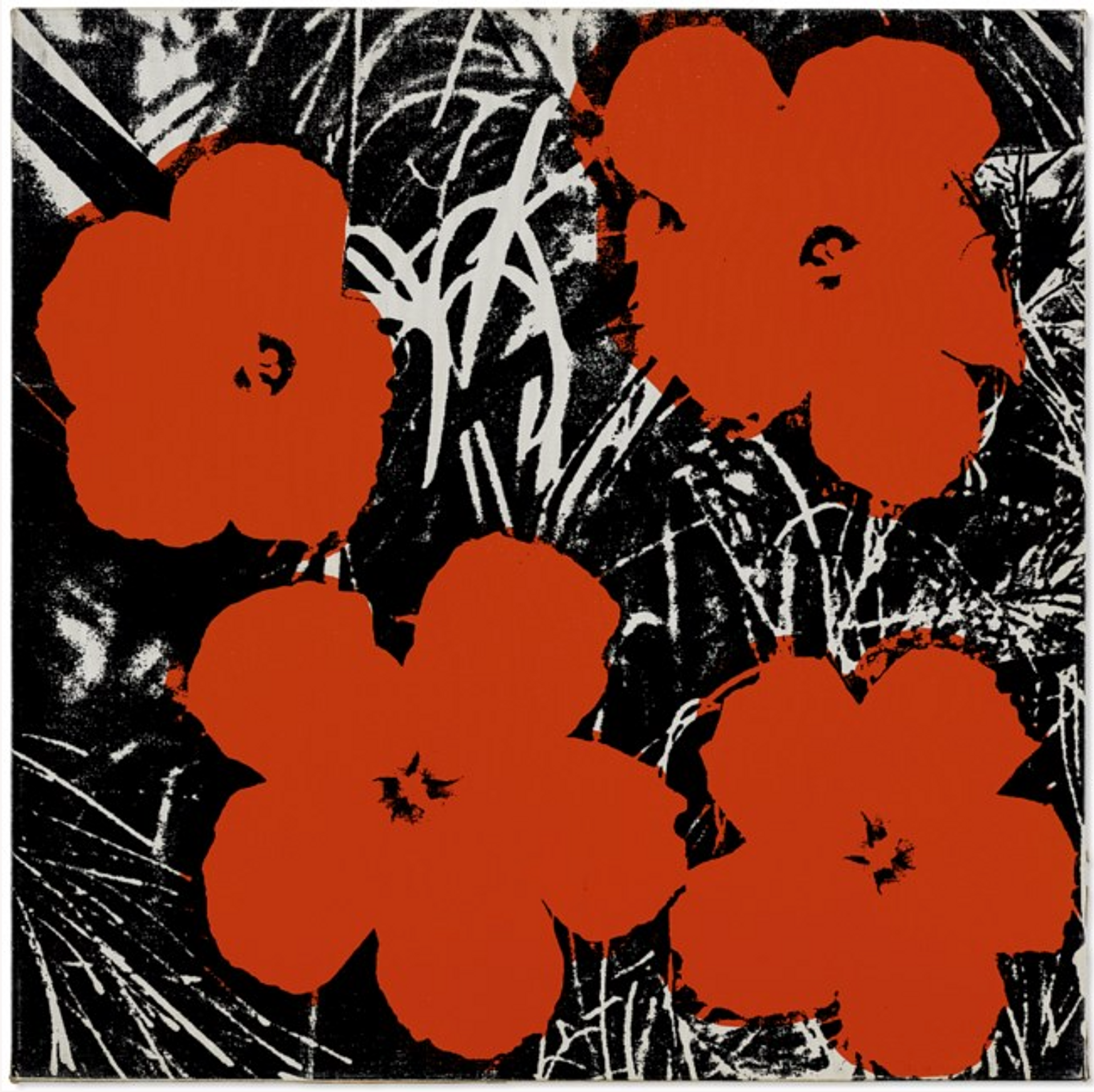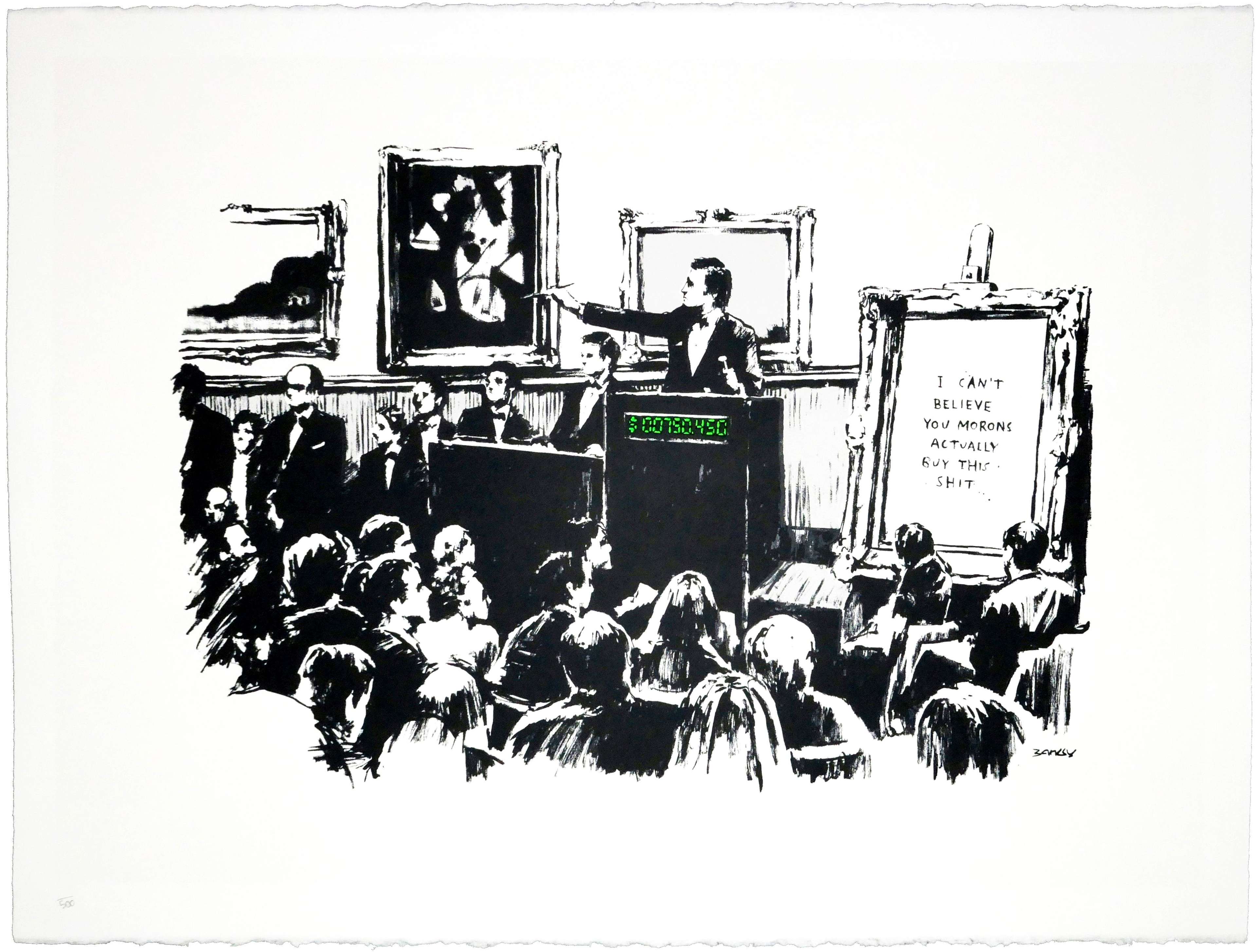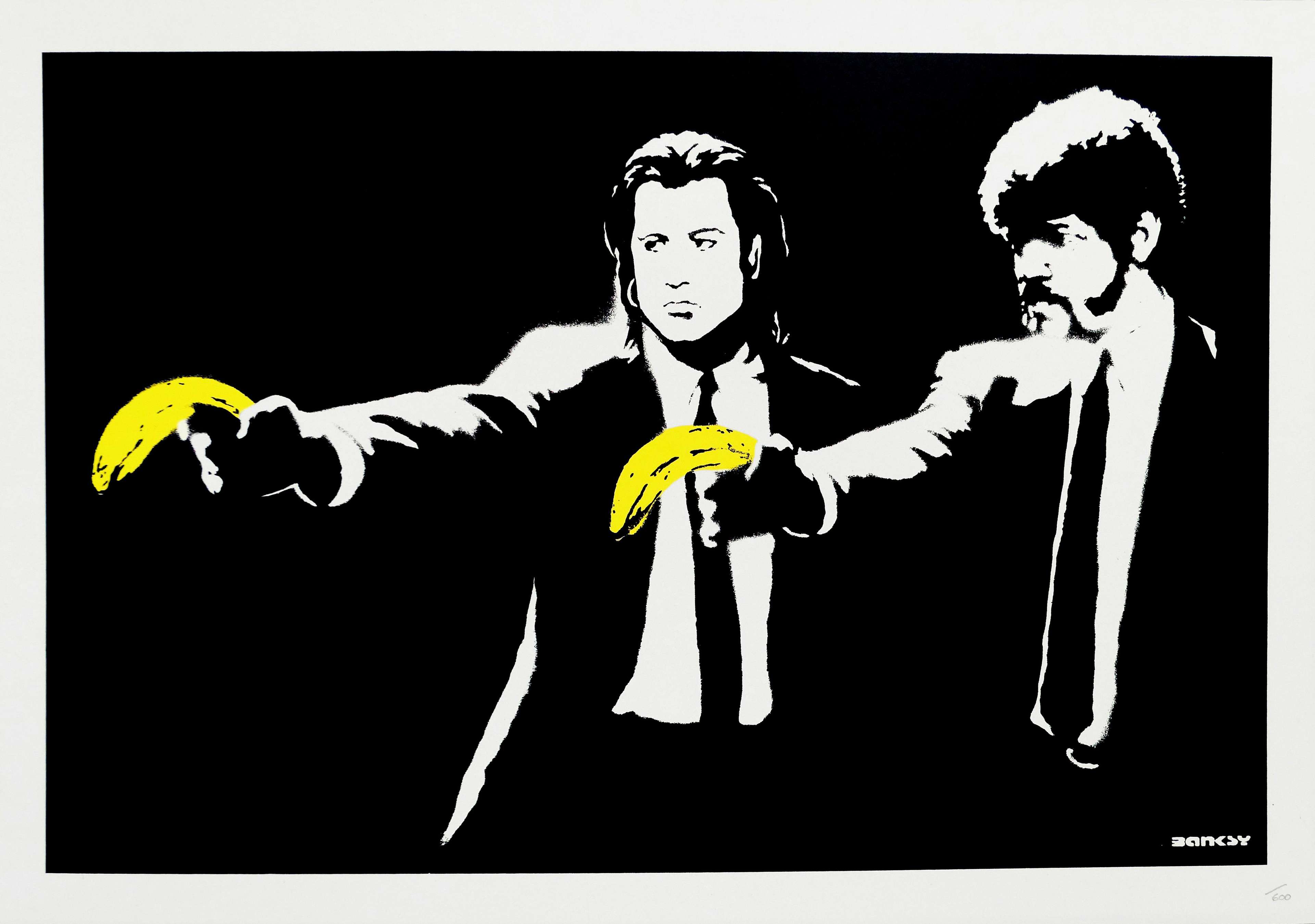Has the Art Market Gone Bananas? Maurizio Cattelan’s Viral Banana Artwork Comedian Set to Make $1million at Sotheby’s

 Image © Sotheby’s / Comedian © Maurizio Cattelan 2019
Image © Sotheby’s / Comedian © Maurizio Cattelan 2019Live TradingFloor
Key Takeaways
Maurizio Cattelan's Comedian, a banana duct-taped to a wall, is set for auction at Sotheby’s with a striking $1-1.5 million estimate. Originally unveiled in 2019, Cattelan’s piece both mocks and critiques the art market’s fixation on spectacle by challenging conventional ideas of artistic value, originality, and permanence. Sotheby’s marketing campaign has amplified the artwork's ironic appeal, transforming it into a cultural icon that tests the boundaries between art, commodity, and entertainment.
In a twist of irony that only the art world could manifest, Comedian, Maurizio Cattelan’s conceptual piece involving a single banana duct-taped to a wall, is set to return to the auction block, with an estimated value between $1 million and $1.5 million. Cattelan’s unconventional artwork, once the subject of worldwide viral fascination and equally fervent criticism, is scheduled to appear at Sotheby’s auction on November 20, 2024, as a headline for their Now and Contemporary Evening Auction.
The Origins of Comedian: A 2019 Art Basel Miami Sensation
When Cattelan unveiled Comedian at Art Basel Miami Beach in 2019, the reactions ranged from disbelief to delight. The piece was almost disarmingly simple; a single, ripe banana affixed to a wall with a strip of duct tape, displayed with the deadpan gravitas usually reserved for the most exquisite masterpieces. This unassuming fruit, however, struck an immediate chord, becoming an overnight cultural phenomenon that sparked debates, inspired pastiches, and blurred the line between fine art and viral gag. The Perrotin Gallery, presenting Comedian with straight-faced aplomb, set its price at a staggering $120,000; a sum that drew gasps from onlookers and headlines worldwide. The piece didn’t sit idly for long; each of the initial copies sold quickly to collectors who recognised in this taped banana a kind of avant-garde brilliance, or perhaps, the sheer thrill of owning an icon of art-world absurdity.
What made Comedian particularly unique was its inherently ephemeral nature. The banana itself was destined to decay, but its artistic ‘essence’ could be perpetuated with replacement fruit, a conceptual sleight of hand that both honoured and mocked the idea of originality in art. For the collector, what they owned wasn’t a piece of fruit, but a piece of art history’s commentary on the arbitrariness of value. In a world where art is often valued by its rarity and permanence, Comedian was unapologetically transient, forcing its audience to confront what exactly they deemed valuable.
The Significance and Controversy of Comedian in the Art World
Marcel Duchamp: Redefining Art with a Urinal
Cattelan’s Comedian isn’t the first time the art world has grappled with a seemingly absurd object that challenges the boundaries of art. Marcel Duchamp’s Fountain (1917), a porcelain urinal turned upside down, signed ‘R. Mutt’, and submitted as art, redefined art’s parameters in a seismic shift. With Fountain, Duchamp proposed that the artist’s intent, not the object’s craftsmanship or originality, could be enough to elevate everyday items into art. This ‘readymade’ piece pushed audiences to think about art in entirely new ways, asking if a common object could be meaningful just by virtue of being chosen by an artist. Like Duchamp’s readymades, Cattelan’s banana invites a serious debate about what constitutes art, but with the satirical undertone of critiquing the art market's appetite for the absurd. Duchamp’s pioneering disruption set the stage for conceptual art, enabling Cattelan to push even further in Comedian.
Andy Warhol: Making Art from the Everyday
While Duchamp questioned whether the mundane could be art, Andy Warhol expanded this notion, transforming everyday objects into celebrated icons that invited joy and engagement. Warhol’s Campbell’s Soup Cans (1962) and Brillo Boxes (1964) epitomise his approach, using familiar consumer products to bridge “high” art with popular culture. These works turned supermarket staples into symbols of both mass production and cultural identity, inviting viewers to consider art in the context of consumerism. By bridging ‘high’ art with popular culture, he redefined what art could be, blurring the lines between art and commodity and suggesting that even the most ordinary objects could hold artistic significance.
Warhol’s exploration of everyday objects continued in Silver Clouds (1966), an immersive installation of floating metallic balloons. Created with engineer Billy Klüver, the piece transformed the gallery space into a playful, interactive experience, encouraging audiences to engage directly with the artwork. With Silver Clouds, Warhol challenged expectations that art must be static and untouchable, paving the way for works that are accessible, spontaneous, and even exhilarating. His openness to irony, play, and experimentation laid a clear foundation for artists like Cattelan. In Comedian, Cattelan echoes Warhol’s influence by elevating a humble banana to an art piece, using it to question art's value, permanence, and the consumerism driving it.
Banksy: Mocking the Art Market
If Duchamp laid the groundwork for questioning what qualifies as art, and Warhol capitalised on the idea, Banksy has arguably perfected the art of critiquing the market itself. Banksy’s Girl with Balloon turned Love is in the Bin, which self-shredded in 2018 right after being auctioned at Sotheby’s, delivered a live statement on the commodification of art. Like Cattelan’s Comedian, Banksy’s stunt exploited the art world’s fascination with the theatrical and the unexpected, using the auction house setting to critique the very institutions that validate and assign value to art. Banksy’s self-destruction of an artwork, transforming it mid-sale, challenged the traditional notion of art as a static, permanent object, much as Cattelan’s banana undermined the idea of art’s permanence. Both artists hold up a mirror to the art market, questioning the frenzy around novelty, rarity, and value while playfully critiquing the collectors who are drawn to it. Through these provocations, Banksy paved the way for Comedian to become more than a taped banana: it became a moment of spectacle in the art world, provoking questions that echo Duchamp, Warhol, and the art market itself.
Sotheby’s Auction: Expectations and Market Context
Sotheby’s decision to auction Comedian aligns with a period where the art market is in search of ‘game-changers’ capable of revitalising interest and curiosity. With auction sales seeing a decline, Comedian may offer a refreshing spectacle for collectors, appealing to the appetite for pieces that engage the public with humour, audacity, and a touch of cultural critique. The pre-sale estimate of up to $1.5 million reflects the artwork’s enduring fame and polarising presence within the art world, as Sotheby’s looks to draw a new wave of collectors into the fold with a piece that is simultaneously an object and an event.
The Role of Andre Sakhai in Comedian’s Return to Auction
Known for championing provocative works that challenge traditional aesthetics, Andre Sakhai saw Comedian not merely as an object but as a cultural flashpoint, a catalyst for debate, and a collector’s trophy that questions value itself. While some scoff at the taped banana’s simplicity, Sakhai sensed its potential to captivate an art market increasingly driven by the allure of spectacle. His role in negotiating Comedian's auction with Sotheby’s not only secured a favourable third-party guarantee for the work, but also underscored the market’s appetite for conceptually charged works that encourage controversy. His involvement signals that, to certain collectors, the true art of Comedian lies as much in its satire as in its physicality.
Third-Party Guarantees
The market for conceptual art is as much about anticipation as it is about the art itself, and Sotheby’s, securing a third-party guarantee for Comedian, has demonstrated full faith in the piece’s continued allure. By obtaining this guarantee, Sotheby’s essentially removed the financial risk of a no-sale scenario, ensuring that Cattelan’s infamous banana would generate significant revenue regardless of buyer turnout. For collectors, the third-party guarantee offers a reassuring signal; it’s an investment-worthy statement piece with cultural longevity. Third-party backers often reflect market confidence from those with insider knowledge, a nod to the potential frenzy Comedian is expected to spark among bidders who understand the value of conceptual art as both a commodity and a commentary. This manoeuvre also subtly elevates the piece beyond its initial status as a ‘joke’ by indicating that its cultural, and market, impact has only grown since its 2019 debut, reaffirming the art world’s commitment to pieces that provoke, entertain, and profit simultaneously.
Marketing and Publicity: Sotheby’s Teases the Banana’s Return
Sotheby’s, ever attuned to the zeitgeist, has embraced the humour of Comedian in a marketing campaign that is as clever as it is self-aware. Playing on the absurdity of auctioning a perishable fruit affixed with duct tape, Sotheby’s Instagram campaign has become a study in irony. In one viral video, a mysterious black briefcase is opened to reveal a taped banana, fittingly captioned with tongue-in-cheek phrases like “A Masterpiece” and “Truly Insane.” In another playful touch, the auction house’s iconic name was reimagined, with the apostrophe in “Sotheby’s” replaced by a small, tape-sealed banana, a nod to the sheer incongruity of elevating the commonplace to fine art status. The campaign has made Comedian’s return feel like an event, enticing both serious collectors and casual observers who appreciate the spectacle. By amplifying the piece’s absurdity, Sotheby’s isn’t just selling a banana; they’re selling a story, a conversation starter, and a modern-day icon that continues to blur the line between art and entertainment.
As Comedian heads to the auction block once more, it reminds us that the art world is a stage where ideas as much as objects command centre stage. In tapping into the absurd and the ephemeral, Cattelan has delivered more than a simple banana; he’s offered us a mirror that both mocks and celebrates our notions of value, permanence, and prestige. The piece transcends its physical simplicity, confronting viewers with the uncomfortable question: what are we really buying when we buy art? In the end, Comedian’s success lies in its unique ability to spark debate, encourage laughter, and draw collectors and casual viewers alike into a playful yet profound exploration of what art means in a world increasingly driven by spectacle and sensation.

















